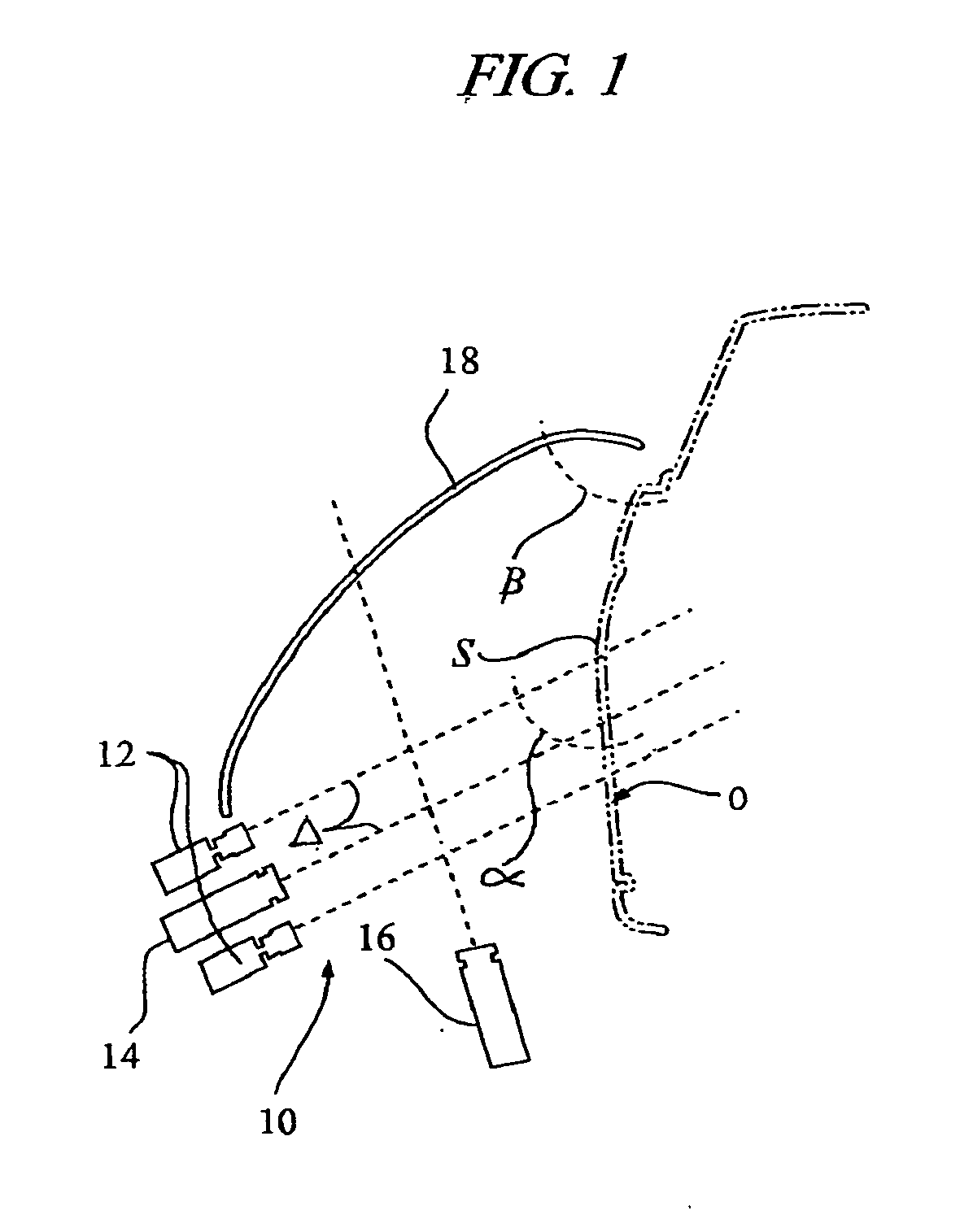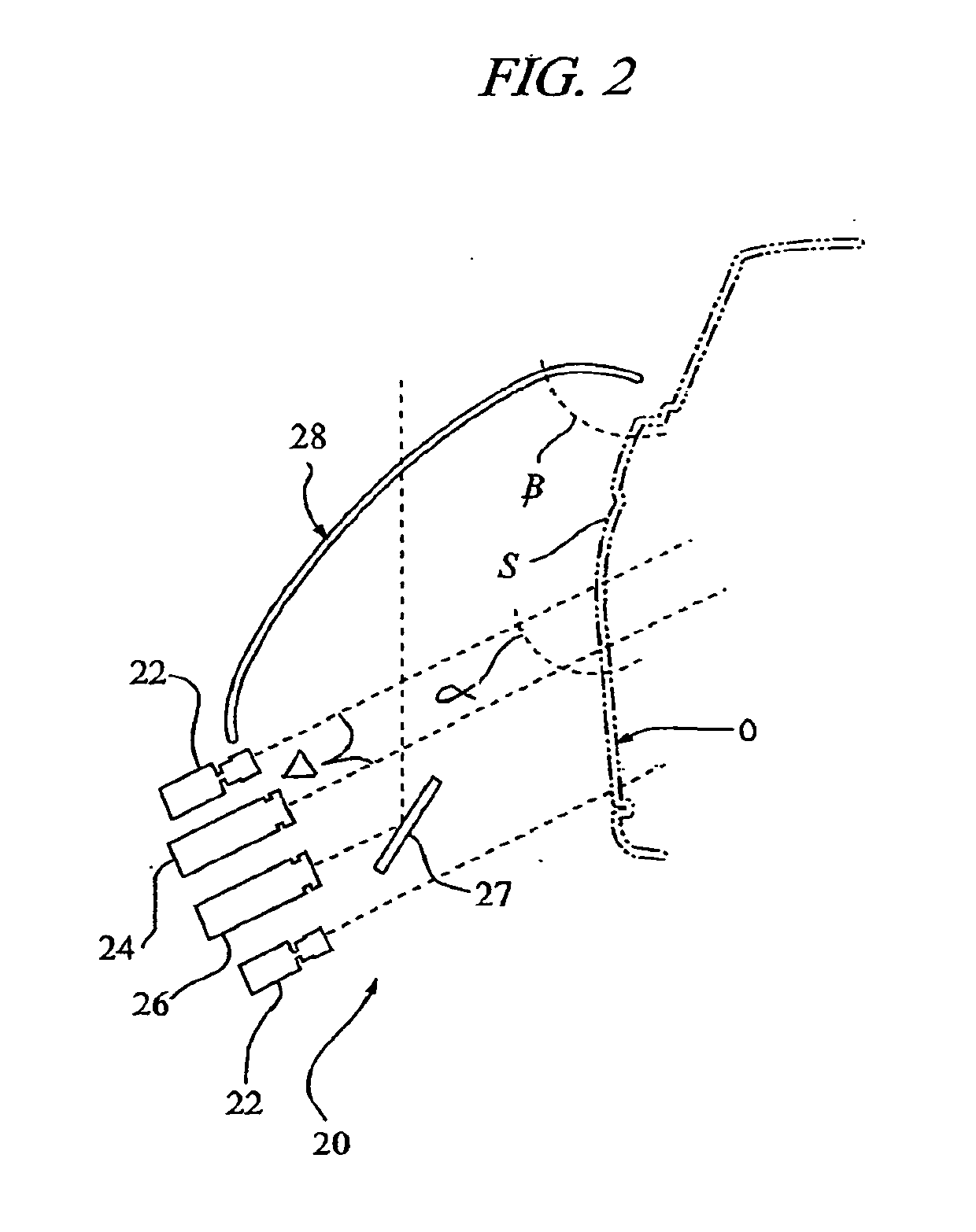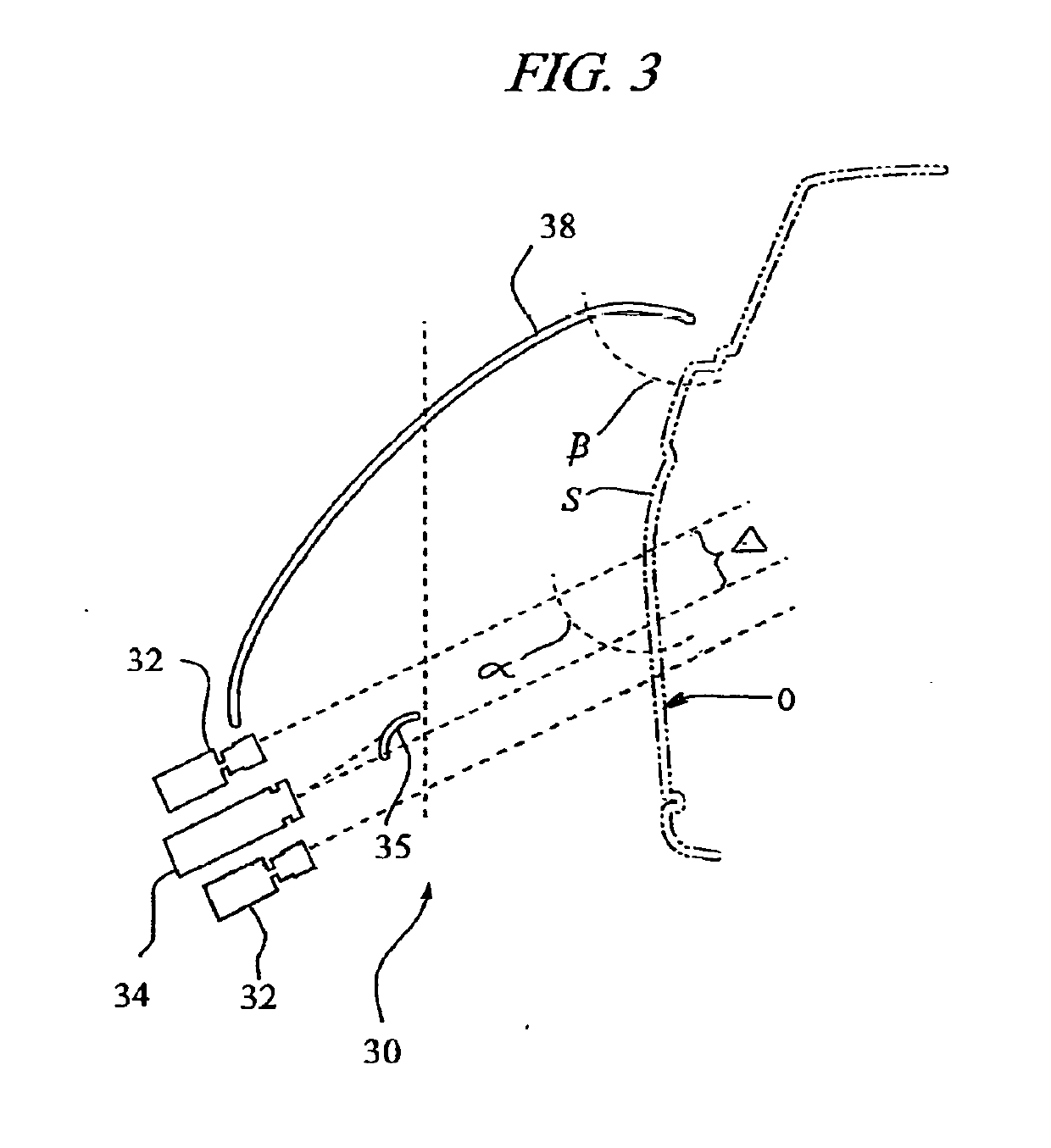Hybrid 3D optical scanning system
a hybrid measurement system and optical scanning technology, applied in the field of metalrology systems, can solve the problems of reducing the accuracy of the measurement, so as to achieve accurate and reliable measurement results
- Summary
- Abstract
- Description
- Claims
- Application Information
AI Technical Summary
Benefits of technology
Problems solved by technology
Method used
Image
Examples
Embodiment Construction
[0033]The following serves to describe a preferred embodiment and alternative variations of the present invention and the best presently contemplated mode of its production and practice. This description is further made for the purpose of illustrating the general principles of the invention but should not be taken in a limiting sense, the scope of the invention being best determined by reference to any associated claims.
[0034]Referring to the drawings, the following is a list of component elements of the present hybrid active stereo 3D construction-deflectometry system, generally designated 10 in FIG. 1 and in further variations as 20, 30, 40, 50 and 60 in FIGS. 2, 3, 4, 5 and 6, respectively, and those associated components employed in connection with the present invention:[0035]10 hybrid active stereo 3D construction-deflectometry system;[0036]12 digital camera stereo pair;[0037]14 first digital projector (for active stereo 3D reconstruction);[0038]16 second digital projector (for...
PUM
 Login to View More
Login to View More Abstract
Description
Claims
Application Information
 Login to View More
Login to View More - R&D
- Intellectual Property
- Life Sciences
- Materials
- Tech Scout
- Unparalleled Data Quality
- Higher Quality Content
- 60% Fewer Hallucinations
Browse by: Latest US Patents, China's latest patents, Technical Efficacy Thesaurus, Application Domain, Technology Topic, Popular Technical Reports.
© 2025 PatSnap. All rights reserved.Legal|Privacy policy|Modern Slavery Act Transparency Statement|Sitemap|About US| Contact US: help@patsnap.com



